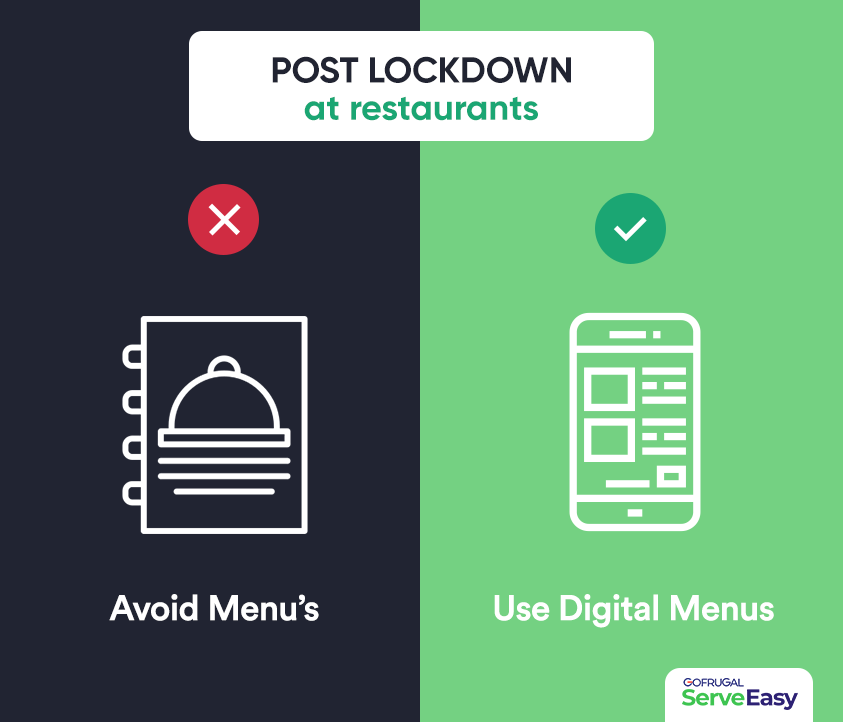As restaurants are slowly opening back for dine-in operations, after COVID 19 Pandemic, it is becoming highly important to reduce the number of touchpoints to improve health and hygiene standards. Technology has helped automate restaurant operations over the years. Once again by adapting to digital solutions, restaurants can reduce a fair bit of touchpoints and offer contactless dining options to guests.
One area where restaurants can reduce touchpoints is by replacing traditional menu cards. Regular Menu cards are handled by 100’s of people and in the current scenario, it is not safe to come in contact with menu cards handled by so many people.
By replacing traditional menus with digital menus, guests will be able to explore menu, order dishes, and make payments through their own mobile devices without touching anything other than their mobile devices enabling contactless dining.
How different are digital menus from traditional menu cards

Traditional menus are nothing but printed copies that cannot be edited once printed and are also extremely hard to clean and maintain. These menu cards also posses the danger of being the breeding ground of deadly bacteria that could easily be transmitted by coming in contact which is something that has to avoided at all cost in the current situation.
Printed menu cards also have a shelf life of 6 months on average. Any changes to the menu means, a new menu needs to be printed or it has to be updated or overwritten in the existing ones. Simply put, Traditional menu possesses a huge health concern and is also expensive.
Whereas a digital menu enables zero contact ordering and can be updated in real-time. Any changes to the menu, description, pricing, and availability are immediately updated in real-time. All that the guest needs to do is to scan the QR code and place an order. This considerably saves money in printing physical copies and enables zero contact ordering which has become very essential in restaurant operations currently.
Read More:How dirty are traditional menus?
Benefits of Digital Menus in restaurants:

- Completely contactless, guests can access the menu on their mobile devices by scanning the QR Code on tables.
- Real-time menu updates, gone are those days where you’ll have to reprint the menu every time you make any changes.
- Digital menus are dynamic and any changes can be made to the menu in just a few clicks and the QR codes need not be changed.
- Order gets posted to the kitchen directly as KOT’s in just a few seconds without any manual intervention.
- Supports both postpaid (QSR’s) and prepaid (Fine dine and casual dine-in restaurants) operational models
- Digital payments, guests can now make payments directly from their device and receive digital receipts.
- Table wise and area wise menu, suppose restaurants have multiple areas, pricing can be fixed based on tables conveniently.
- Guests can make any special requests through their mobiles directly
- No dependency to download an app, the menu can be accessed on a browser, ensuring frictionless ordering experience.
Why do you need a contactless digital menu solution tightly integrated with a POS?
It is important that the digital menu solution is tightly integrated with a backend POS for smooth and seamless operation. Orders placed by guests need to flow directly to the kitchen as KOT’s without any manual work. Also, any changes made in the backend POS portal with regards to the menu item availability, description, and pricing needs to be immediately updated in real-time to ensure a smooth and seamless experience.
Implementing a digital menu fully integrated with a POS system is one step towards contactless dining in restaurants that would further convince guests to dine in at restaurants comfortably without any second thoughts.
